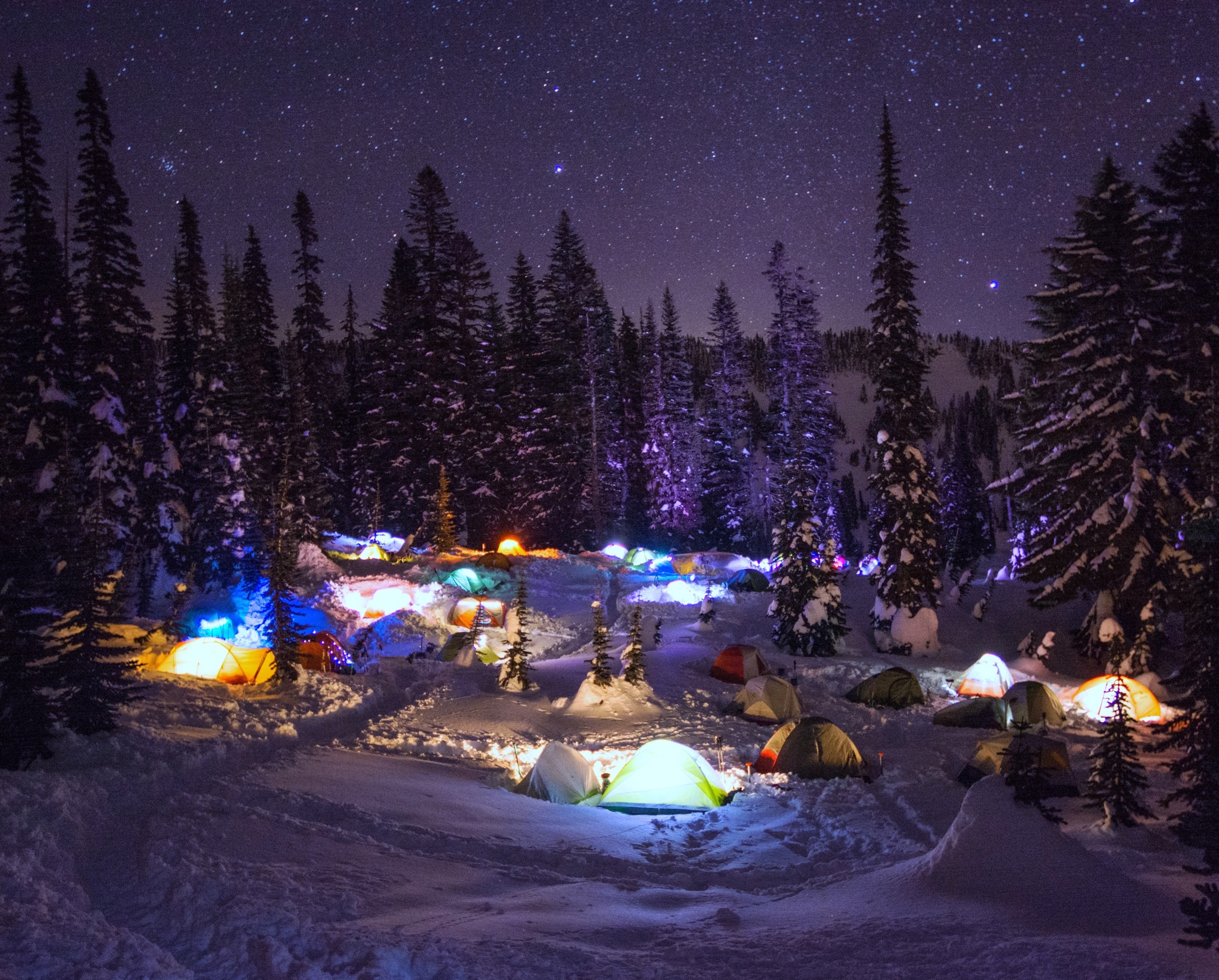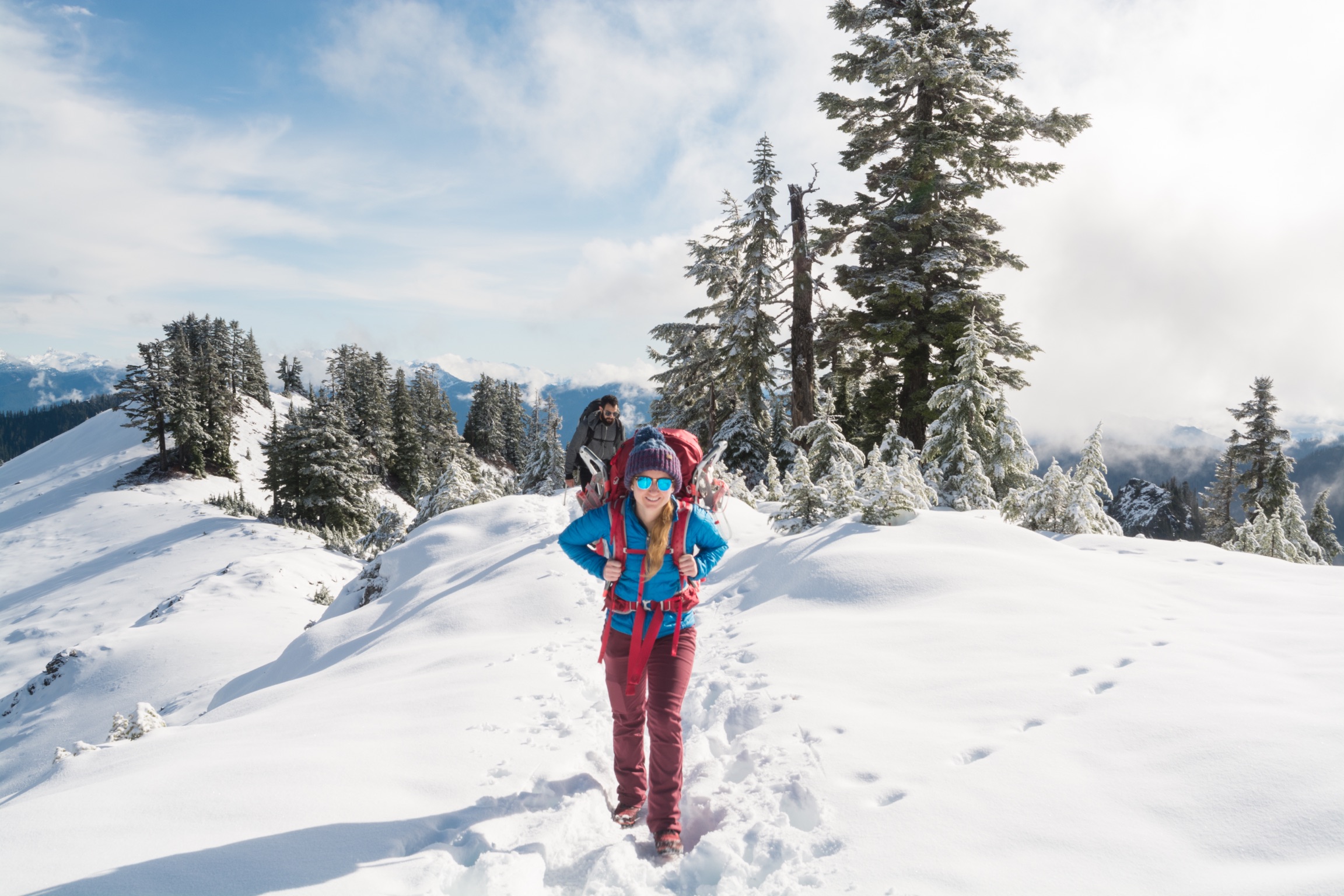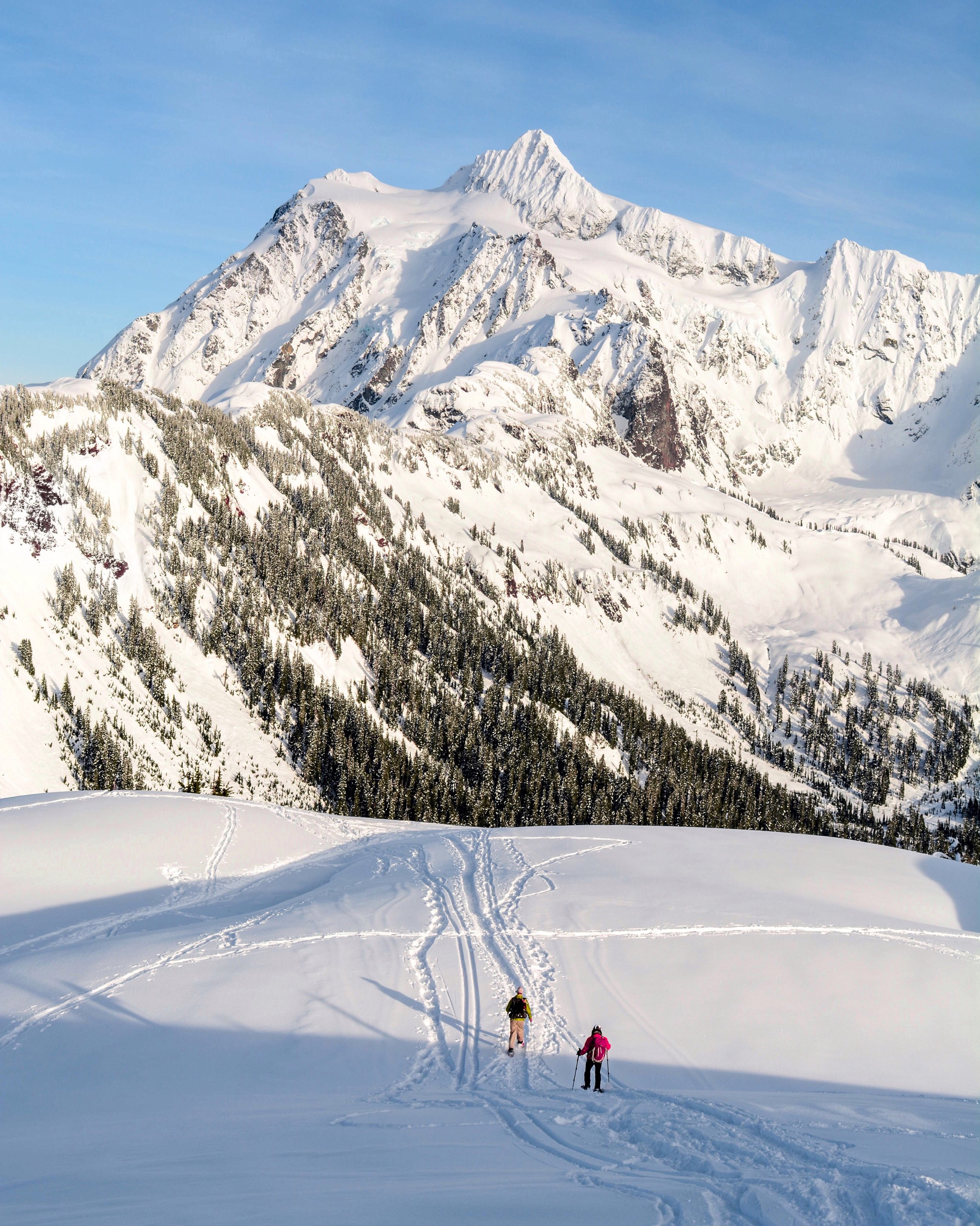We’re in the thick of the holidays and it’s a stressful time of year. Here in the PNW, the weather usually takes a turn for the bleak as folks scurry around, trying to catch up with family and friends while navigating the finances and norms of gift-giving.
Whether you’re feeling strapped for cash or searching for the perfect present for the person who has everything, consider giving the gift of experience and memories over stuff this holiday season. I have rounded up a few of my favorite adventures below and encourage you to grab the ones you love for some quality time together outside this holiday season.
Snowshoeing, Sledding and Touring at Paradise
Paradise is aptly named. No matter the season, it’s a dreamy spot with a lot of options for the beginner adventurist and seasoned explorer alike. You can grab some sleds and hit the mini slopes to watch children and adults alike shrieking with laughter as they slide down the snow in the shadow of Tahoma, take a guided snowshoe tour with a ranger, or have a walkabout at your leisure, taking in the sights from Panorama Point to the Tatoosh and beyond.
Things to consider:
A piping hot thermos of soup, hot cocoa, or tea will add some flair and magic to your day! Throw it in your backpack, then unpack when hunger strikes for a festive picnic in the snow!
Be careful with timing. The gates to Paradise close each night for maintenance and safety issues. You’ll need to be down the mountain before then, or risk a hefty fine. The best resource is the MRNP Twitter account, which you can view here:
Check the avalanche forecast! This applies to every winter adventure in the Cascades. Certain routes in the area pass through or under avalanche terrain. Make sure you check the avalanche forecast on NWAC before heading out, and stay safe!
Experience the Ape Cave Lava Tube at Mount St. Helens
Mount St. Helens is home to the longest continuous lava tube cave in the continental United States. At just shy of 2 miles, it’s a relatively easy tromp through a fascinating natural feature, though you do have to traverse the occasional rock pile and a few slippery water-logged features. Keep your eyes peeled for the natural windows, which provide the perfect opportunity for some dramatic photos and bring water and snacks with you! Pro-tip: I much prefer hiking to the far end of the caves, then returning under the ground!
Things to consider:
You will definitely want headlamps and maybe even flashlights as it’s very dark inside! Consider backup batteries in the event that you want to linger!
Wear a raincoat and layer up! It can be a bit chilly and drippy inside of the caves, so have a few layers handy and definitely bring a raincoat to stay dry.
Grab some hand sanitizer and pack a picnic to be enjoyed after the caves! You’ll definitely get your hands a little dirty inside, so save the big snacks for a post-adventure meal if you can!
Head East and visit the Palouse Falls
Palouse Falls is a remnant from Ice Age and one of the most striking falls in Washington state! Water plunges 200 feet to a pool below, and the spines of a nearby ridge lend an ethereal quality to the spot! It’s a bit of a drive, but more than worth it to take in the views and hike around the area.
Things to consider:
Early winter sunsets make catching the glow at the falls a reasonable winter adventure, giving you plenty of time to drive home and sleep in your own bed if you’re just going for a day trip! Grab a thermos of something hot and tuck in for the show.
Be careful as you explore the area surrounding the falls. Waterlogged slopes can be more unstable so stick to the marked trails and take in the views safely!
Check the pass before you hit the road if you’re heading over I-90, and go prepared! Safety first, friends!
Visit the Olympic Peninsula
The Peninsula offers something for everyone. Looking for a spot to play in the snow? You can’t go wrong with Hurricane Ridge, Lower and Upper Lena Lakes, Mount Storm King, or one of the many other popular winter hiking destinations. Fancying some time in the hot springs? The Olympic Peninsula has those too! Itching for a little winter beach time? Check, check, and check! Grab your loved ones and hit the road for a memorable adventure!
Things to consider:
Many of the coastal destinations on the Peninsula require that you purchase a recreation pass from the Makah tribe. Please respect all tribal rules and regulations as you recreate on tribal land, and honor the work they are doing to preserve these places.
If possible, plan your route to include a ferry ride. Washington ferries are a fun, beautiful way to make your way around. Always double check the WSF ferry site before you go for schedules and seasonal closures. Bonus points: they serve local beers and wines on board so grab a designated driver and a glass of something delicious.
Coastal weather is mercurial. Make sure you have layers and waterproof gear so you’re ready for anything the peninsula throws at you!
Catch Sunset at Artist Point
At 4 miles roundtrip, the trek up to Artist Point in the winter is moderate and incredibly rewarding! Skirt around the active resort area and climb toward Table Mountain until you’re greeted with incredible views of the Canadian border peaks, Mount Shuksan, Mount Baker (originally and most accurately known as Koma Kulshan) and other stellar views of the North Cascades. It’s a great spot to layer up and hunker down for sunset and if you’re lucky, you’ll be treated to gorgeous pink light washing over Shuksan as the sun goes down. Before you get too cold, strap on a headlamp and make your way back to the car, then head down the hill for pizza and burgers at Chair 9.
Things to consider:
As with the rest of the Cascade locations, be cognizant of avalanche risk and the terrain you’re traversing on your explorations. Stay safe out there.
The trail skirts around active ski areas. Respect the trail boundaries or you’ll run amuck of the Mount Baker Ski resort staff!
Consider grabbing a spot at the Baker Lodge if you’re not interested in making the trek in a day!
What are your favorite adventures to share with loved ones in the winter? I would love to hear all about them!
















